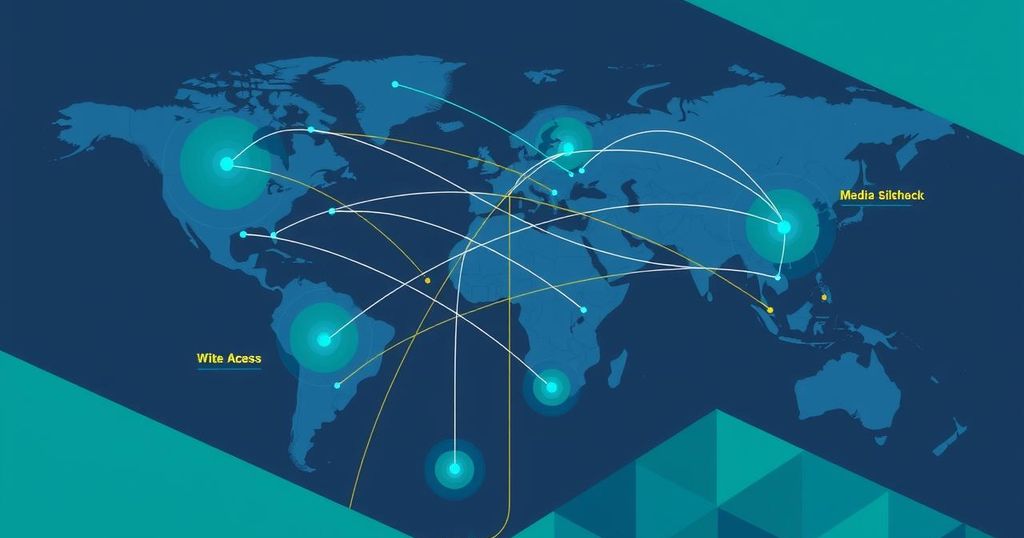The New Frontier in Medtech: Navigating Trade Tensions for Investment Gains

- China-EU trade tensions create significant risks and opportunities in medtech.
- The EU’s restrictions may reshape supply chains and impact profitability.
- Companies must choose between localization and the risk of exclusion.
- Investment prospects favor firms pursuing geopolitical de-risking strategies.
- Strategic investors should focus on leaders while hedging risks accordingly.
Trade Tensions Reshape Global Investment Landscape
The ongoing trade disputes between China and the EU have sparked a monumental shift in the medical technology sphere, posing both significant threats and unique opportunities for investors. With mutual restrictions in place—such as barring foreign companies from public tenders exceeding established monetary thresholds—the medtech industry has transformed into a key front in international geopolitics. Investors are now grappling with a burning question: how will these evolving dynamics influence profitability and direct capital allocation?
New Supply Chain Dynamics in Medtech
The European Union’s introduction of the International Procurement Instrument (IPI) is set to take effect in June 2025, which forbids Chinese medical device manufacturers from obtaining public contracts that surpass €5 million and also limits the usage of Chinese components to only 50%. In an act of retaliation, China has imposed similar caps, barring EU firms from contracts above 45 million yuan, equating to roughly $6.3 million. Both the EU and China defend their positions with claims of reciprocity; the EU cites discriminatory practices in China’s economic policies, while China characterizes the EU’s actions as protectionist in nature. The direct fallout from these imposed restrictions is a fracturing of existing supply chains, forcing companies to select between localization or the risk of exclusion from lucrative contracts.
Winners and Losers in a Changing Landscape
The consequences of the IPI for European medtech companies can be viewed as a double-edged sword. On one hand, they are provided new access to a procurement domain previously closed off, but on the flip side, profitability now relies heavily on maneuvering through increased complexities. Companies like Fresenius (FRE.DE) or Stryker (SYK), for example, may be compelled to increase regional production while the imposed limits on the utilization of Chinese components invariably lead to heightened sourcing costs. Chinese firms, conversely, face a crucial decision: either establish manufacturing operations within the EU, perhaps through joint ventures, or risk losing access to key contracts. For firms like Mindray Medical (2252.HK) and Shanghai Medical (603856.SH), an inability to pivot could result in tightening profit margins.
Exploring Investment Opportunities
The genuine investment opportunities appear to be clustered around companies actively pursuing geopolitical de-risking practices. Stryker (SYK), with its extensive presence across the U.S., Europe, and Asia, holds an advantageous position to shift production and circumvent limits on Chinese components. Similarly, Fresenius (FRE.DE) benefits from its global reach, allowing it to compete effectively in EU tender processes while minimizing dependency on Chinese suppliers. Emerging firms from the ASEAN region, such as Wockhardt (WOCK) which holds EU certification, stand poised to seize market share as Chinese players find themselves increasingly marginalized. Singapore’s IHH Healthcare (IHHY.SI), the largest healthcare provider in that country, could also significantly broaden its medtech offerings to fill the gaps left by EU-China trade tensions. Contract manufacturers like Flex Ltd. (FLEX) might be critical in enabling supply chain diversification through their expansive global networks and expertise in medtech assembly.
Evaluating Risks in Current Landscape
Nevertheless, with opportunity comes risk, and investors need to be acutely aware of the inherent volatility. Supply chain inflation is a pressing concern, as the costs associated with diversification threaten to erode profit margins unless these costs can be shifted to consumers. Potential disputes at the World Trade Organization (WTO) regarding the IPI could create significant legal uncertainties moving forward. Furthermore, a frantic push towards localization may inadvertently foster oversupply situations, especially in regions like Southeast Asia. Therefore, caution is paramount even as the prospect of economic gains appear enticing.
Strategic Moves for Savvy Investors
Investors should consider adopting strategic plays that align with ongoing shifts in the industry. It may be prudent to invest in localization leaders; companies that already possess a strong regional presence and robust balance sheets can prove to be the safest bets. Conversely, shorter-term investments in Chinese medtech companies that lack localized operations might be riskier, as they may experience constrained profit margins in the face of heightened competition. Finally, for a more conservative approach, bonds issued by European medtech firms; say, the Eurobonds by Fresenius, could provide steady income in a time when equity markets face considerable volatility.
In summary, the evolving trade warfare between China and the EU within the medtech sector boils down to a struggle for control over key supply chains, not merely punitive tariffs. Investors contemplating their next steps must integrate a thorough analysis of geopolitical movements with solid financial strategies. Companies that excel in localization and diversifying their supply chains are likely to emerge victorious—while those that fail to adapt may find themselves sidelined in a rapidly changing marketplace.




